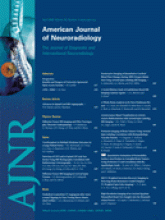When did acute transverse myelitis (ATM) join the select differential group of being used for anything that shows T2 hyperintensity within the cord? Now I am as guilty as the next person in using tuberculosis and lymphoma for every differential, but as of late, residents and fellows have, without telling me, expanded that list. Can we set the record straight? Idiopathic ATM should be one of the last things out of our mouths when faced with an expanded cord with T2 hyperintensity. Not that ATM is not a real diagnosis, but we should strive to provide specific etiologies for the cord abnormality before leaping into the idiopathic realm. ATM is a focal inflammatory disorder, resulting in motor, sensory, and autonomic dysfunction.1 There are approximately 1200 new cases per year in the United States and an incidence of 2 per 500,000 population. In comparison, spinal cord tumors occur more frequently at 2 per 100,000 (and when was the last time you saw a new spinal cord tumor?). Parainfectious ATM (acute disseminated encephalomyelitis [ADEM]) occurs in 1 per 100,000 population, with cord involvement much less common.2 Those rates are eclipsed by multiple sclerosis (MS), which occurs in 30 per 100,000 population.
The underlying difficulty with this is the confusing and disparate nomenclature involved with myelopathic cord pathology. And you thought disk disease terminology was arcane.
First, we have “acute transverse myelopathy,” which is distinct from myelitis. This term is the broadest and reflects a clinical constellation of findings, not a specific diagnosis. Myelopathy is to myelitis as back pain is to herniation. Transverse myelopathy includes both inflammatory and noninflammatory etiologies and excludes compressive lesions (so does ATM). The cornucopia of etiologies for this diagnosis includes MS, systemic diseases such as Sjögren syndrome and systemic lupus erythematosus (SLE), vascular disease (infarct, fistula), parainfectious diseases (ADEM), radiation myelopathy, and, finally, idiopathic causes.3
ATM is a subset of the transverse myelopathies and requires evidence of cord inflammation. Within the diagnosis of ATM, there are disease-associated varieties and idiopathic myelopathies. Idiopathic myelopathy makes up 16%–17% of transverse myelopathies in 1 large series.3
The Transverse Myelitis Consortium Working Group has proposed strict criteria for the diagnosis of idiopathic ATM.1 The inclusion criteria include the following: 1) development of sensory, motor, or autonomic dysfunction attributable to the spinal cord; 2) bilateral signs and/or symptoms; 3) clearly defined sensory level; 4) exclusion of extra-axial compressive etiology by neuroimaging; 5) inflammation within the cord demonstrated by CSF pleocytosis or elevated immunoglobulin G index or gadolinium enhancement; and 6) progression to a nadir between 4 hours and 21 days following the onset of symptoms.
The exclusion criteria are equally important to define and include both systemic diseases and infections. The primary systemic diseases to consider are sarcoidosis, Behcet disease, Sjögren syndrome, and SLE. Infections include syphilis, Lyme disease, human immunodeficiency virus, human T-cell lymphoma/leukemia virus-1, and Mycoplasma species; and viruses such as herpes simplex virus-1 (HSV-1), HSV-2, varicella-zoster virus, Epstein-Barr virus, cytomegalovirus, human herpes virus-6, and enteroviruses. Finally, the brain should not have lesions consistent with MS.
How can we provide useful information for this diagnosis? The criteria suggest that if ATM is suspected, we must first exclude compressive lesions and define an intramedullary contrast-enhancing lesion for the inflammatory component. By the numbers, most will be MS. Defining the longitudinal extent and presence of multiple lesions may help in narrowing down the differential (greater than 4 more with Devic disease, less than 2 segments more with MS). Of course, the presence of brain periventricular lesions increases the likelihood of MS (along with SLE and parainfectious etiologies), and optic neuritis with longitudinally extensive cord lesion should suggest Devic disease. Talk to the clinician. What was the time course of the developing deficit? Does the CSF suggest an inflammatory etiology? Could it be vascular in etiology with a very abrupt onset?
Remember:
ATM
Noninflammatory
Vascular
Radiation
Inflammatory (ATM)
Disease-associated ATM
MS
Devic disease
Systemic diseases
SLE
Behcet
Sjögren
Parainfectious diseases
ADEM
Infectious diseases
Syphilis
Lyme
HIV
Virus
Paraneoplastic diseases
Idiopathic disease
- Copyright © American Society of Neuroradiology












